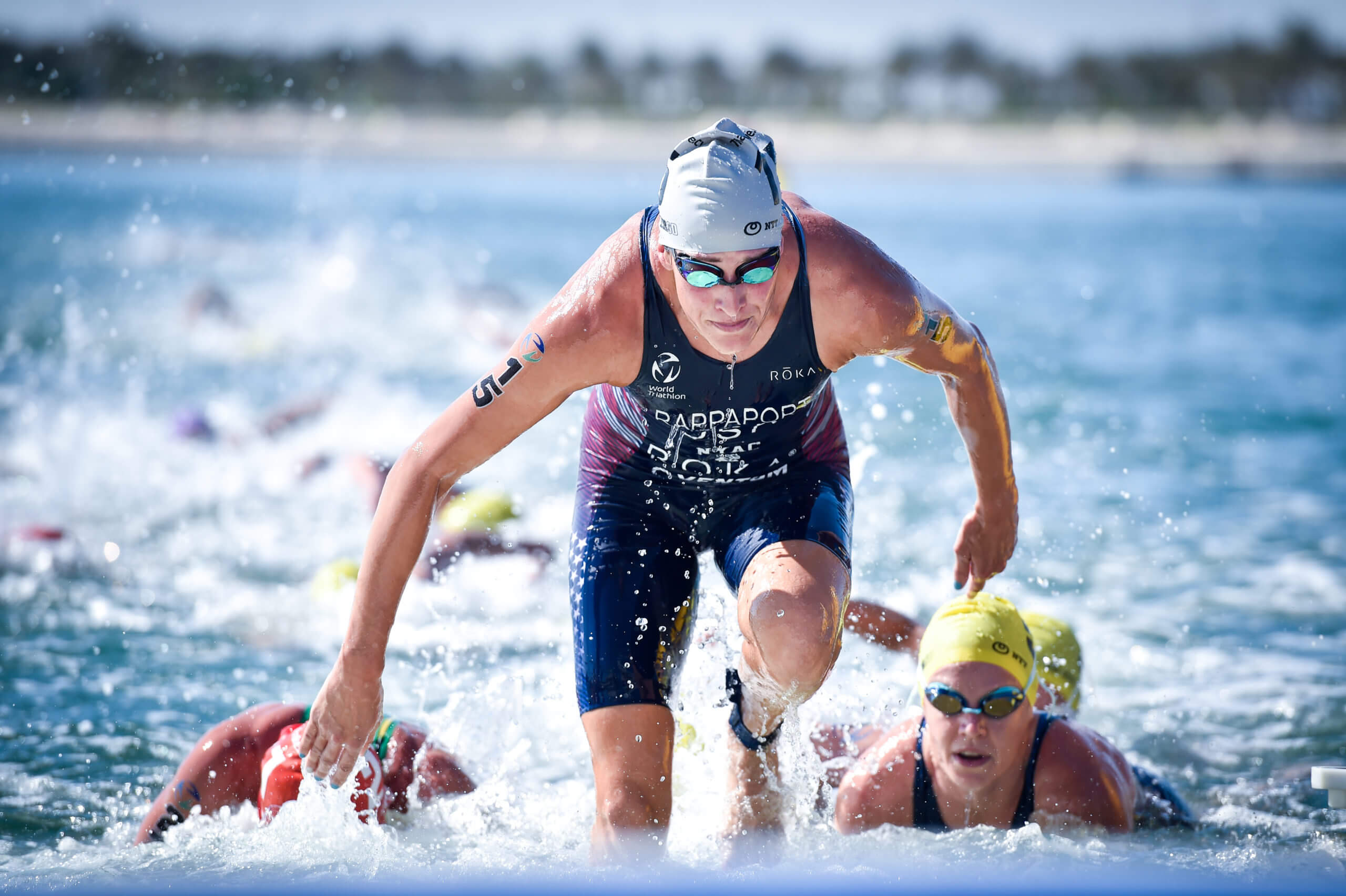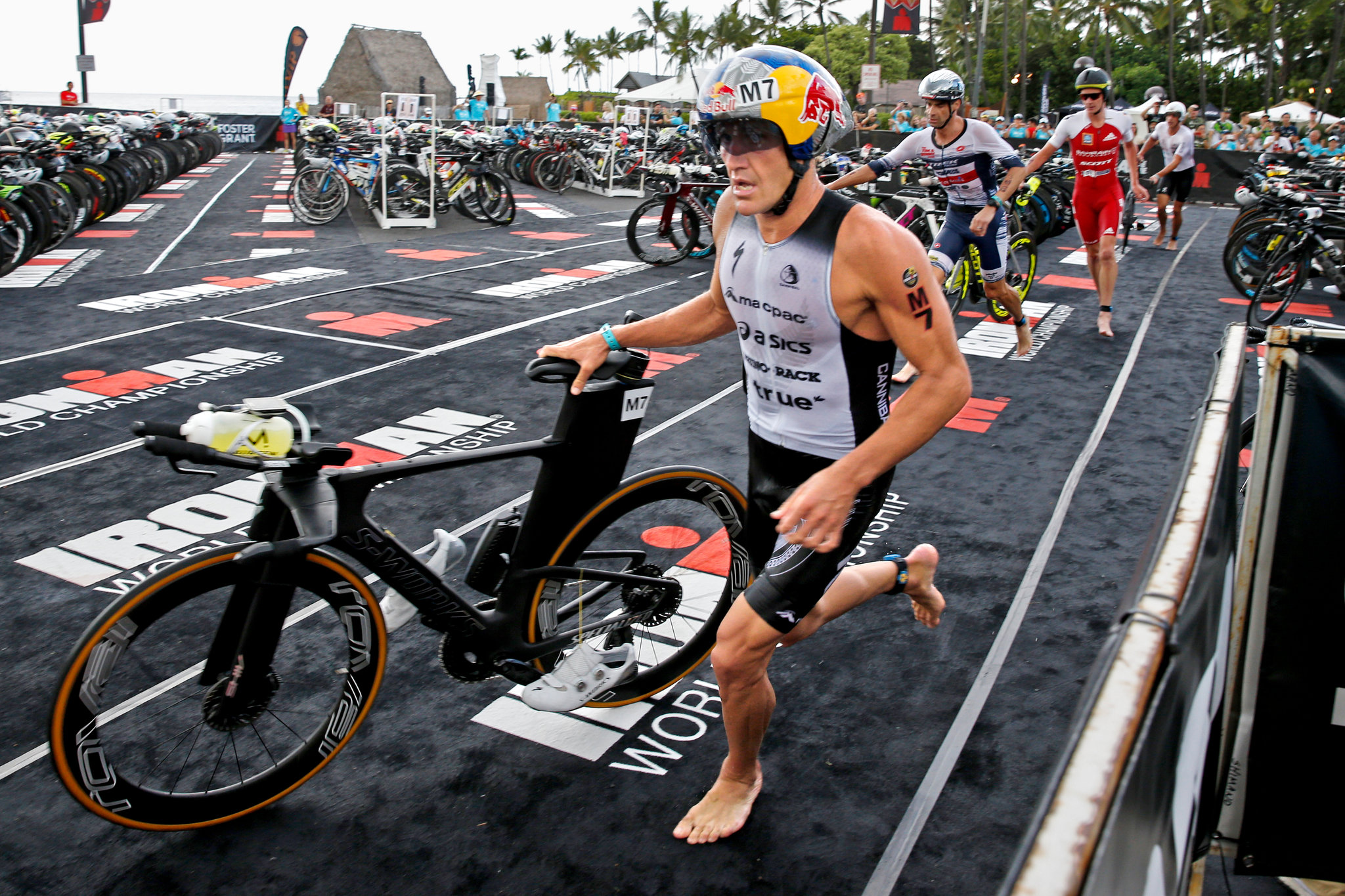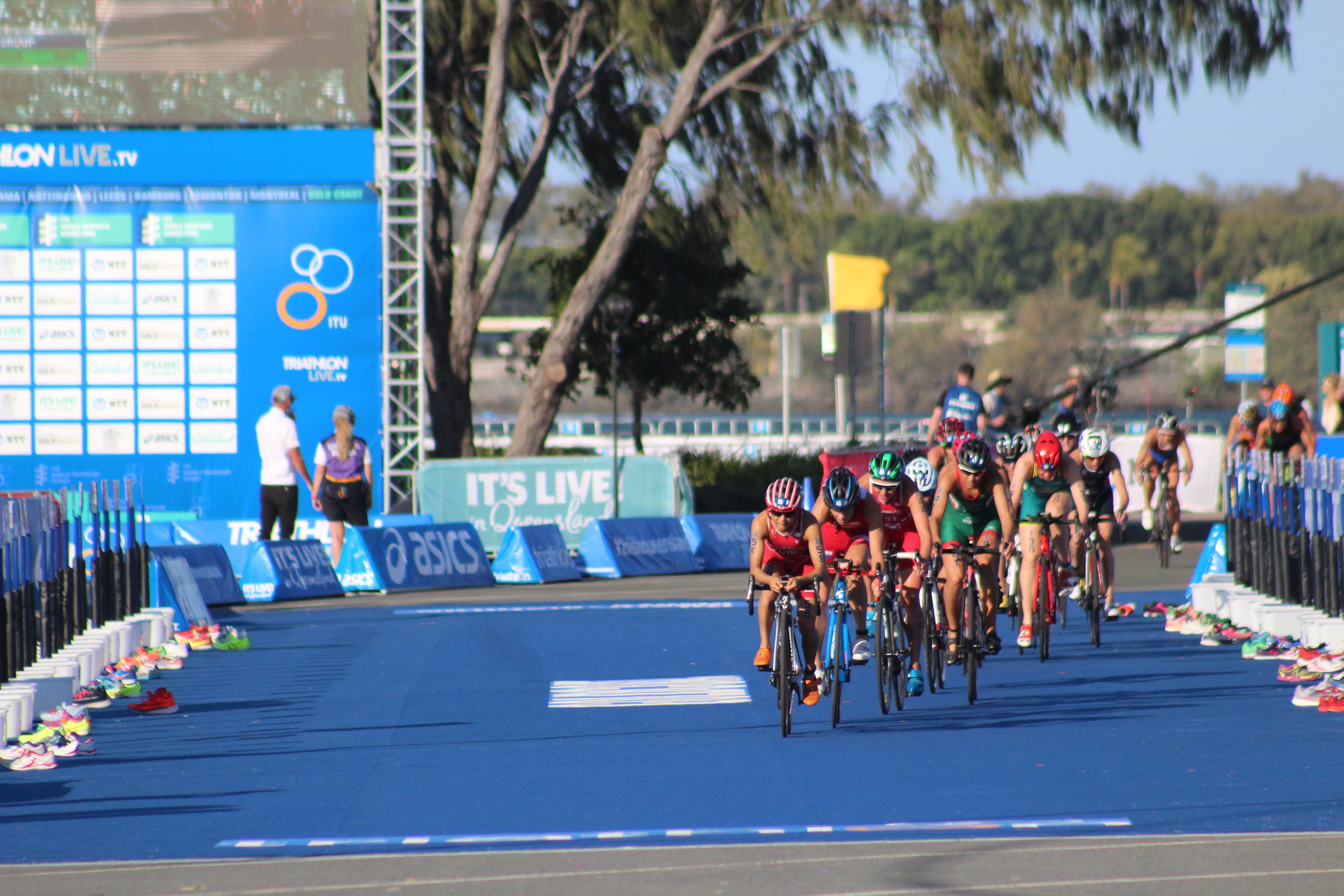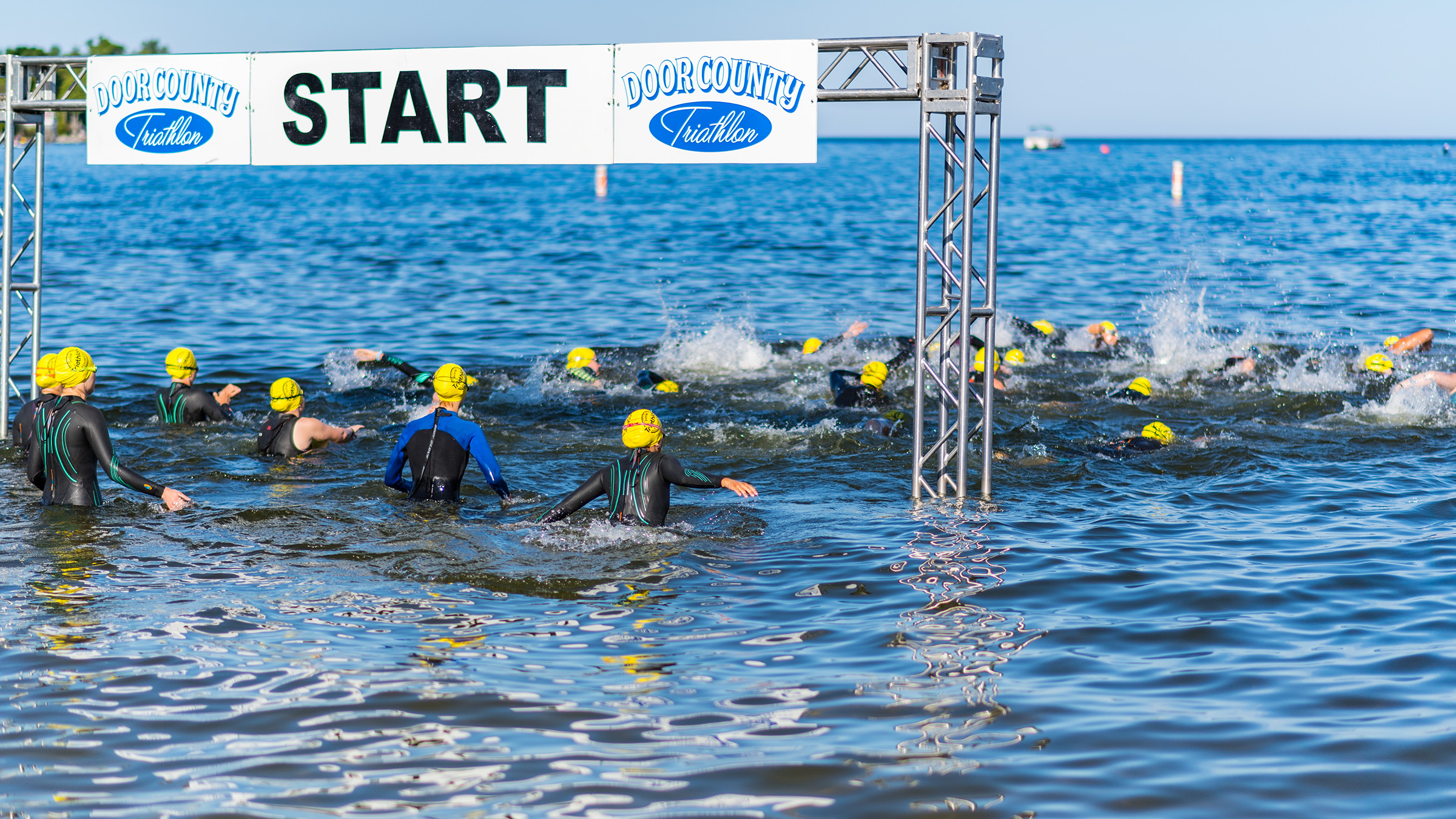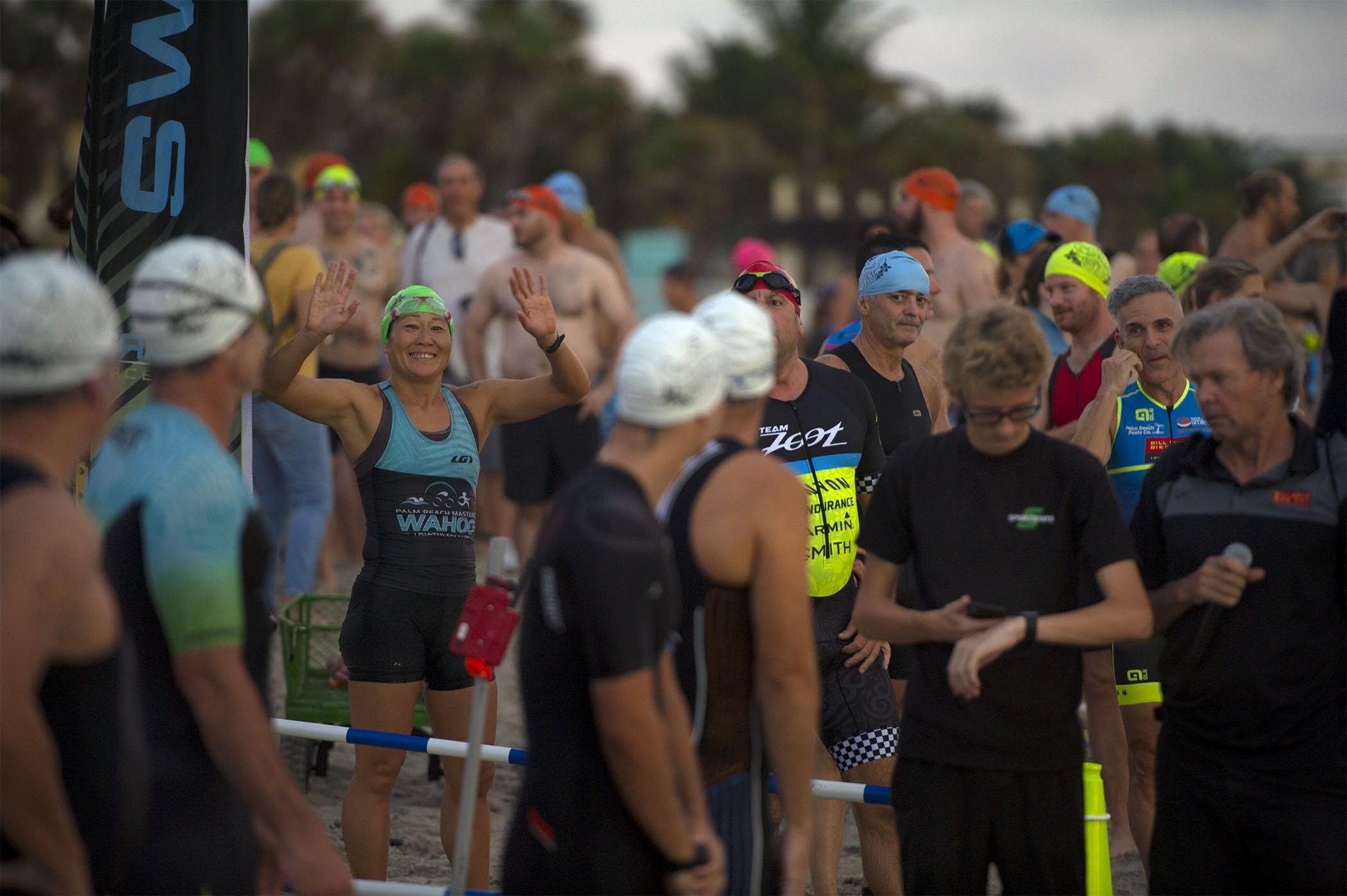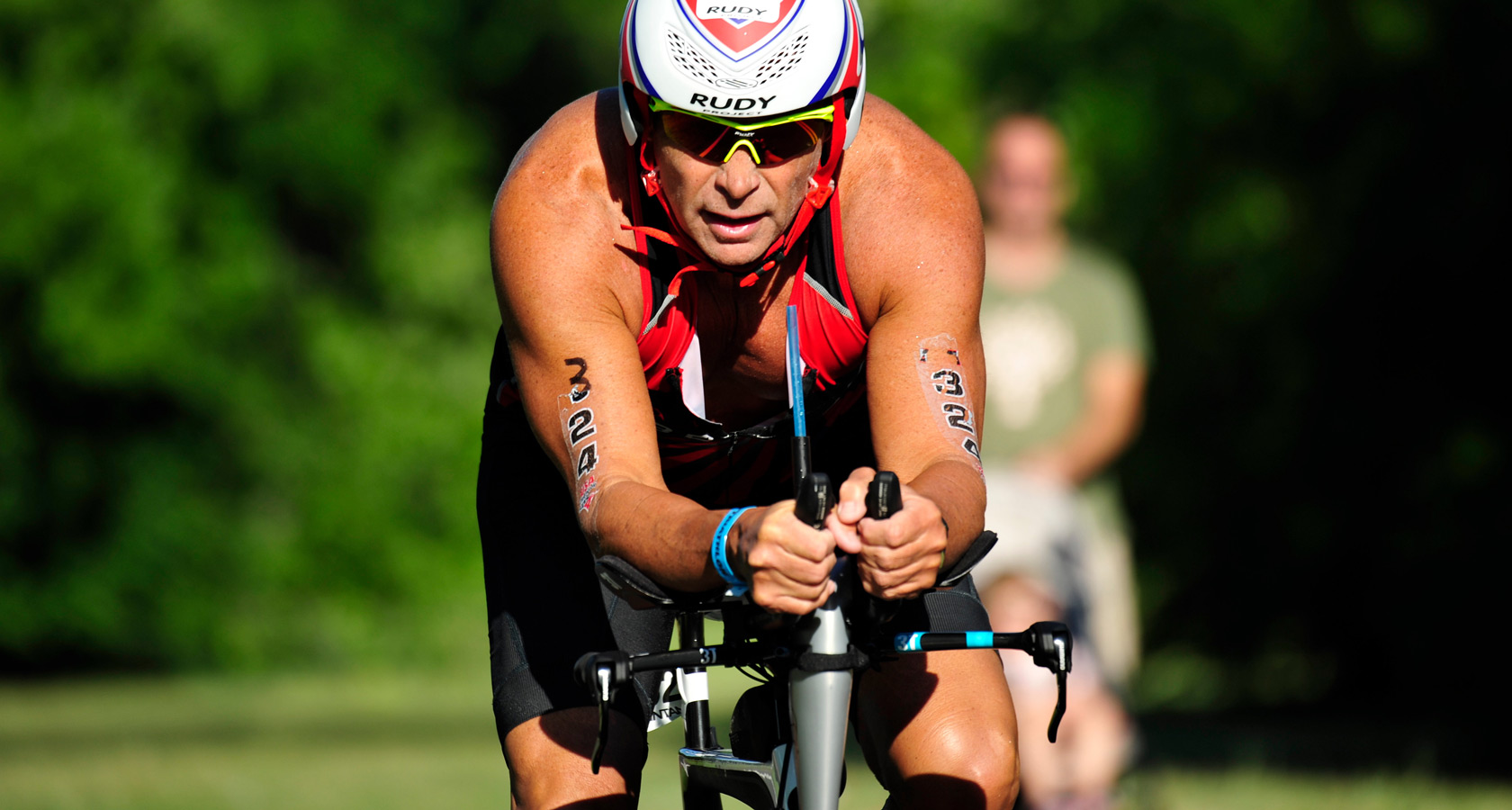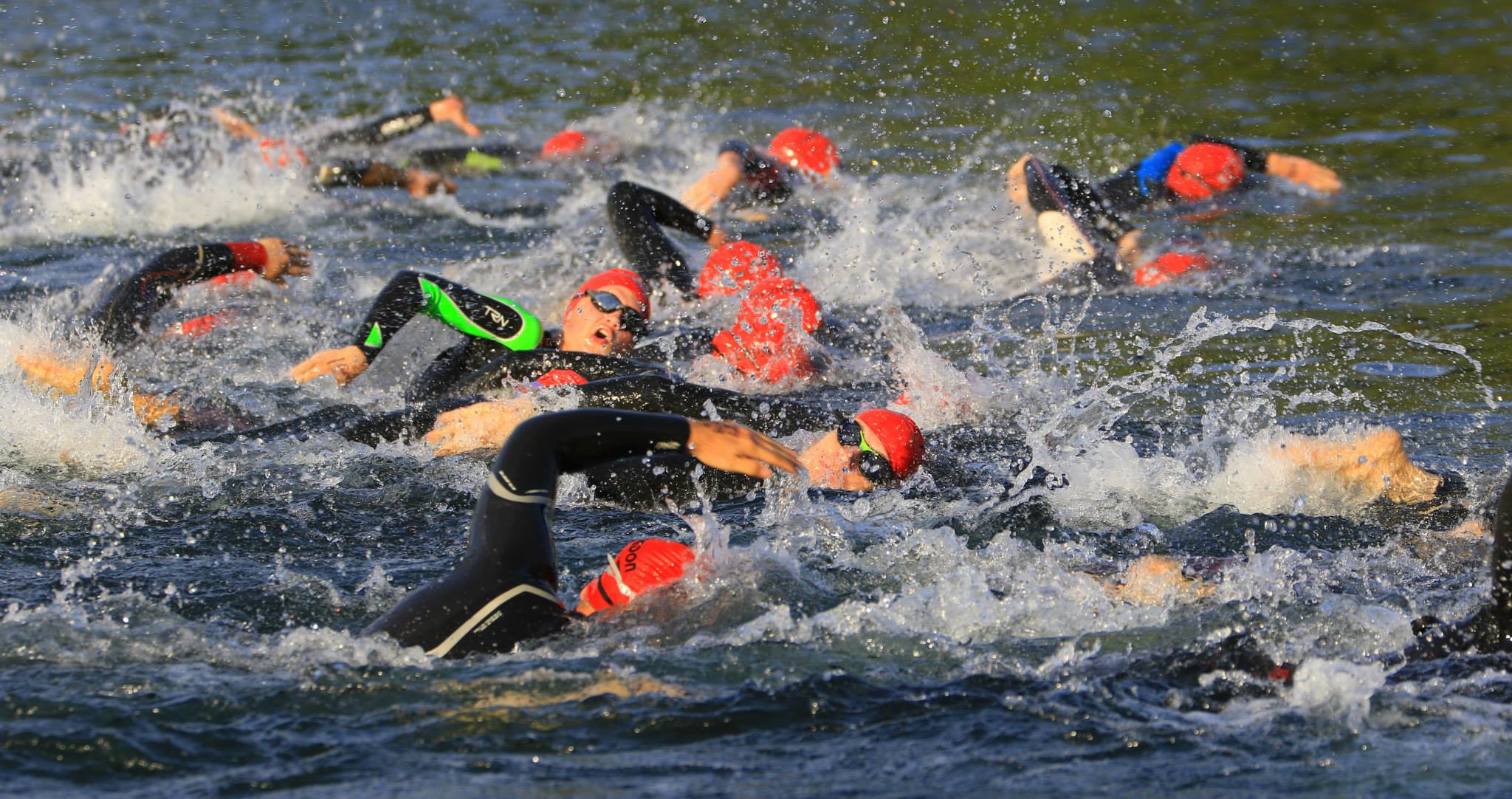

Featured
What Is A Snake Swim In A Triathlon
Modified: January 2, 2024
Discover the fascinating world of snakes! Learn about how these slithering creatures defy expectations by swimming in triathlons. Don't miss this featured article showcasing their remarkable abilities and unique adaptations.
Introduction
Triathlons are renowned for pushing the limits of human athletic ability, testing both physical endurance and mental fortitude. But what if I told you there’s a unique twist to this already grueling sport? Imagine diving into the water for the swimming leg of a triathlon and finding yourself surrounded not by other athletes, but by a slithering mass of snakes. Welcome to the world of snake swimming in triathlons.
Snake swimming may sound like a bizarre concept, but it’s a phenomenon that has gained traction in recent years. It adds an element of excitement and uncertainty to the already intense challenge of a triathlon. Understanding what snake swimming entails, how to train for it, and the benefits and challenges it presents is essential for anyone brave enough to take on this peculiar twist on a classic event.
Before diving into the depths of snake swimming, it’s important to clarify that the snakes encountered in these events are not live reptiles. Instead, they are inflatable snakes placed strategically throughout the swim course. Think of them as floating markers that athletes must contend with while navigating the water. These snakes not only add an extra level of difficulty but also provide a visual spectacle for spectators and participants alike.
While the origins of snake swimming might be somewhat obscure, it has gained popularity in various triathlon events around the world. The challenge of slithering around these inflatable obstacles adds a unique twist to the traditional swim leg, making it an unforgettable and thrilling experience for participants.
In the following sections, we will delve into the fascinating world of snake swimming, exploring the techniques, training, and preparation required for this unique triathlon endeavor. So strap on your goggles, tighten your cap, and get ready to dive into the world of snake swimming in triathlons!
Understanding Snakes
Before we can fully appreciate the challenges and intricacies of snake swimming in triathlons, it’s important to have a basic understanding of the snakes themselves. In this context, we’re not referring to live reptiles but rather inflatable snake-shaped markers used in these events. These markers are typically made of durable materials such as PVC or rubber and are designed to float in the water, creating obstacles for swimmers to navigate around.
The inflatable snakes are often brightly colored to enhance visibility and excitement during the race. They come in various sizes, ranging from a few feet to several meters long, with different levels of flexibility. The flexibility can affect their movement in the water, making some snakes sway or bob while others remain relatively stable.
These snake markers are strategically placed along the swim course, creating a challenging and dynamic environment for the athletes. Unlike traditional swimming races, where participants follow a straight path, snake swimming requires athletes to navigate around these obstacles, adding an extra layer of complexity to the race.
Since the primary goal of snake swimming is to create a unique and memorable experience, event organizers often aim to place the snakes in visually stunning patterns or formations. This not only adds a visual spectacle for spectators but also adds a mental challenge for participants who must quickly assess and adapt their swimming strategy as they encounter different snake formations.
It’s worth noting that the snakes used in these events are carefully designed to be safe for athletes. They are inflatable, meaning they can be easily pushed or swum over without causing harm. However, it’s important for swimmers to remain cautious and aware of their surroundings to avoid any collisions or entanglements with the snakes while swimming.
Now that we have a better understanding of what snake markers are and their purpose in snake swimming events, let’s explore the specific swim training required to tackle this unique challenge in the next section.
Swim Training for Snakes
Preparing for snake swimming in a triathlon requires a specific training regimen that focuses on both traditional swim techniques and adapting to the presence of inflatable snake markers. By incorporating targeted swim drills, athletes can develop the necessary skills and confidence to navigate around these obstacles efficiently.
First and foremost, it’s crucial to prioritize building a strong foundation of basic swimming skills. This includes mastering proper body position, breathing techniques, and stroke mechanics. Working with a swim coach or joining a swim club can be immensely helpful in refining these fundamental skills.
Once a solid foundation is established, the focus can shift towards snake-specific training. One key element is practicing sighting techniques. Sighting involves lifting the head slightly out of the water to get a clear view of the markers ahead, allowing swimmers to adjust their course accordingly. Incorporating regular sighting drills into training sessions helps develop the ability to quickly identify and navigate around the snake markers during the race.
In addition to sighting, it’s important to simulate race-day conditions as much as possible during training. This can be achieved by setting up an inflatable snake course in a pool or open water where athletes can practice swimming around the markers and adapting to their movements. Gradually increasing the difficulty of the course by adding more obstacles or varying the formations will help athletes become accustomed to the challenges they will encounter during the actual event.
To further enhance race readiness, incorporating interval training and endurance swims into the training plan is crucial. This helps build both speed and stamina, ensuring athletes have the necessary power and endurance to tackle the swim leg of the triathlon. Intervals can be modified to simulate bursts of speed required to maneuver around the snake markers, while longer endurance swims prepare the body for the overall distance of the race.
Finally, it’s essential to incorporate mental preparation into swim training. Visualizing and mentally rehearsing swimming around the snake markers can help athletes develop a strategic approach to the race. By envisioning different scenarios and practicing how to adapt to unexpected situations, swimmers can build confidence in their ability to navigate the snake course effectively.
By focusing on the integration of traditional swim techniques with specific snake swimming drills and mental preparation, triathletes can ensure they are adequately prepared to tackle the unique challenges of snake swimming in a triathlon.
The Role of Snakes in Triathlons
Snakes play a significant role in adding excitement and a touch of novelty to triathlons. Incorporating inflatable snake markers into the swim leg of a triathlon introduces a unique challenge for athletes and creates a distinctive atmosphere for both participants and spectators.
One of the primary roles of snakes in triathlons is to enhance the spectator experience. The visual spectacle created by the brightly colored and creatively arranged snake markers adds an element of intrigue and excitement to the swim leg. Spectators can witness athletes maneuvering around these obstacles, appreciating their skill and agility in navigating the snake course.
The presence of snakes also adds a mental challenge for participants. Triathlons already require athletes to push through physical fatigue and mental barriers, but the addition of snake markers adds an extra layer of complexity. Participants must quickly assess and adapt their swim strategies as they encounter different snake formations. This mental demand further tests their focus and problem-solving abilities during the race.
Furthermore, snakes serve an important navigational purpose in triathlons. The markers provide clear visual cues, guiding swimmers along the designated swim course. They help athletes stay on track and avoid veering off course while in the water. This is particularly valuable in open water or large-scale triathlon events where visibility can be challenging due to crowded swim lanes or turbulent water conditions.
Another role of snakes in triathlons is to create an inclusive and diverse experience for participants. While swimming may not be the favored discipline for all triathletes, the inclusion of snake markers adds an element of fun and variety to the swim leg. It provides an opportunity for athletes of all levels to engage with a unique challenge and enjoy a different aspect of the race.
While snakes in triathlons primarily serve the purpose of enhancing the overall experience, it’s important to note that safety always remains a top priority. Event organizers take precautions to ensure that the inflatable snake markers are securely placed, pose no harm to swimmers, and are properly maintained to prevent any accidents or mishaps during the race.
In summary, the presence of snakes in triathlons brings excitement, mental challenges, and navigational benefits to the swim leg of the race. By adding a touch of creativity and uniqueness, these inflatable snake markers create a memorable and engaging experience for both participants and spectators alike.
Benefits and Challenges of Snake Swimming
Snake swimming in triathlons offers a range of benefits and presents its own set of challenges. Understanding both the advantages and obstacles associated with this unique form of swimming is crucial for athletes considering taking on the snake swim challenge.
One of the primary benefits of snake swimming is the added excitement and novelty it brings to a triathlon. By incorporating inflatable snake markers into the swim leg, the race becomes more visually engaging for both participants and spectators. The presence of these obstacles adds a sense of adventure and unpredictability to the event, making it an unforgettable experience.
Another advantage of snake swimming is that it requires athletes to adapt their swimming techniques and strategies. Navigating around the inflatable snakes challenges swimmers to be more agile and flexible in their movements. This can improve overall swim skills and make athletes more versatile in various water conditions.
Snake swimming also provides an opportunity for triathletes to test their mental resilience. As they encounter different snake formations, participants need to make quick decisions and adapt their swim course accordingly. This mental challenge strengthens their focus, problem-solving skills, and ability to stay calm under pressure, which can be valuable in other aspects of the triathlon and beyond.
However, snake swimming is not without its challenges. The presence of inflatable snake markers adds an element of physical difficulty to the swim leg. Athletes must navigate around these obstacles while maintaining their speed and rhythm, which can be demanding, particularly as fatigue sets in during the race.
Another challenge is the potential for congestion and collisions among swimmers. With everyone vying to swim around the snake markers, there is a higher risk of bumping into other participants. This requires athletes to maintain situational awareness and be mindful of their surroundings to avoid accidents or setbacks.
Additionally, snake swimming may pose a challenge for individuals who are not comfortable swimming in open water or navigating through obstacles. It is important for athletes to assess their swimming abilities and comfort level in such conditions before taking on the snake swim challenge. Proper training and preparation can help mitigate these challenges and ensure a safer and more enjoyable experience.
In summary, snake swimming in triathlons brings excitement, mental and physical challenges, and the opportunity for skill development. While it adds a unique element to the sport, it also requires athletes to overcome obstacles and potential congestion during the race. By understanding and preparing for both the benefits and challenges, triathletes can fully embrace the adventure of snake swimming and enhance their overall race experience.
Techniques for Snake Swimming in a Triathlon
To successfully navigate through the snake markers in a triathlon and optimize performance, athletes need to employ specific techniques tailored to snake swimming. These techniques will help athletes maintain speed, efficiently maneuver around obstacles, and ultimately finish strong in the swim leg of the triathlon.
1. Sighting: Proper sighting technique is essential when swimming around snake markers. Lift your head slightly out of the water to get a clear view of the markers ahead. This will allow you to adjust your course and ensure you are heading in the right direction.
2. Body Position: Maintaining a streamlined body position is crucial for efficient and fast snake swimming. Keep your body horizontal, with your head aligned with your spine, and engage your core muscles to minimize drag. This will help you glide through the water and maintain speed.
3. Cornering: When encountering sharp turns around the snake markers, use a modified sidestroke or the crossover stroke technique. This allows you to quickly change direction while minimizing disruptions to your rhythm and speed.
4. Drafting: Take advantage of drafting opportunities during snake swimming. Position yourself slightly behind or to the side of another swimmer to benefit from reduced drag. However, be mindful of not impeding their progress or causing collisions.
5. Flexible Ankles: Snake swimming often involves navigating through snakes that may sway or move in the water. Having flexible ankles allows you to quickly adjust your foot position to avoid obstacles and maintain a smooth and steady kick rhythm.
6. Mental Preparation: Besides the physical techniques, mental preparation is vital for successful snake swimming. Visualize and mentally rehearse swimming around the snake markers, envisioning the different formations you might encounter. This mental practice helps build confidence and prepares you for the unique challenges you will face during the race.
7. Practice in Similar Conditions: Incorporate training sessions in open water or large pools to simulate race-day conditions. This will help you adapt to the open water environment and practice navigating around obstacles in a setting similar to the triathlon swim leg.
It’s important to note that mastering these techniques requires consistent practice and experience. Incorporate snake swimming drills into your training regimen and gradually increase the difficulty as you become more comfortable and proficient. By honing these techniques, you can improve your snake swim performance and enhance your overall triathlon experience.
Preparing Snakes for a Triathlon
While the focus of triathlon preparation is often on the athletes themselves, it’s important not to overlook the preparation required for the inflatable snake markers used in snake swimming. Proper care and attention to detail ensure that the snakes are ready for race day, providing a challenging and visually captivating experience for participants.
1. Quality Check: Before every triathlon, event organizers should conduct a thorough quality check on the inflatable snake markers. This includes inspecting for any signs of wear and tear, holes, or leaks. It’s essential to ensure that the snakes are in good condition and able to maintain their buoyancy and shape throughout the swim leg.
2. Placement and Design: Strategic placement of the snake markers is key to creating an engaging and challenging swim course. Event organizers should plan the location, spacing, and patterns of the snakes to maximize their impact on the race. The design and colors of the snakes should be visually appealing and eye-catching for both participants and spectators.
3. Safety Measures: The safety of the participants should always be a top priority. Event organizers should implement safety measures to prevent accidents or injuries related to the inflatable snake markers. This may include securing the snakes firmly in place to avoid drifting or entanglement, as well as placing them at a safe distance from any potential hazards in the water.
4. Maintenance and Repair: Regular maintenance and repair are crucial to keep the snakes in optimal condition. This includes patching any small leaks or tears, maintaining proper inflation, and cleaning the snakes to prevent the buildup of dirt or debris. It’s important to have a dedicated team responsible for the upkeep of the inflatable snake markers.
5. Inflation and Deflation: Timing is essential when inflating and deflating the snake markers. They should be fully inflated before the start of the race and deflated promptly at the end to avoid congestion in the swim area. Organizers should ensure sufficient manpower and equipment to handle the inflation and deflation process efficiently.
6. Storage and Transportation: Proper storage and transportation of the inflatable snake markers are essential to prolong their lifespan. They should be stored in a clean, dry, and temperature-controlled environment when not in use. Additionally, care should be taken during transportation to prevent any damage or punctures that could affect the performance of the snakes.
By prioritizing the preparation and maintenance of the inflatable snake markers, event organizers can deliver an exceptional and safe snake swimming experience for triathlon participants. Paying attention to the details ensures that the snakes are ready to create a challenging and visually stunning swim leg that adds an exciting twist to the triathlon journey.
Snake Swim Etiquette and Safety Measures
Snake swimming in a triathlon requires not only skillful swimming but also adherence to proper etiquette and safety measures. It’s essential for all participants to prioritize safety, respect fellow swimmers, and navigate the snake course in a responsible manner. By following these guidelines, we can ensure a smoother and safer snake swimming experience for everyone involved.
1. Respect Personal Space: While swimming around the snake markers, it’s important to respect the personal space of other participants. Avoid swimming too closely behind or beside others to prevent collisions or disruptions to their swimming rhythm. Give ample room for fellow swimmers to navigate around the snakes.
2. Be Aware of Swimmer Density: Snake swimming can lead to denser swim conditions due to the increased number of participants navigating around the inflatable snakes. Stay vigilant and maintain situational awareness to avoid accidental collisions. Adjust your speed and position as necessary to maintain a safe distance from other swimmers.
3. Communicate Clearly: Effective communication can help prevent misunderstandings while swimming around the snake markers. Use hand signals or verbal cues when approaching or passing other swimmers. Clear and concise communication helps ensure that everyone remains aware of their surroundings and can swim safely through the course.
4. Yield to Faster Swimmers: If you are a slower swimmer, be courteous and yield to faster swimmers who are approaching from behind. This enables the faster swimmers to navigate freely and maintain their momentum without unnecessary obstruction. Move to the side and allow them to pass safely.
5. Watch for Signs and Instructions: Pay attention to any signs or instructions provided by race officials or lifeguards regarding the snake swim leg. They may provide guidance on the best approach to navigate the snake course or relay important messages about any changes or hazards in the water.
6. Maintain Calmness and Control: It’s natural to feel some excitement and adrenaline during the snake swim leg, but it’s important to remain calm and in control. Panicking or aggressive behavior can lead to accidents or impair your ability to navigate through the snake markers smoothly. Stay focused, maintain composure, and swim with confidence.
7. Follow Safety Guidelines: While snake swimming is designed to be safe, it’s crucial to adhere to all safety guidelines provided by the event organizers. This includes wearing the recommended swimwear, following the designated swim course, and reporting any emergencies or injuries promptly.
By embracing proper snake swim etiquette and prioritizing safety, we can ensure an enjoyable and accident-free snake swimming experience in triathlons. Stay mindful of fellow swimmers, communicate effectively, and remain aware of your surroundings throughout the swim leg. Let’s make snake swimming a challenging yet safe endeavor for all participants.
Conclusion
Snake swimming in triathlons adds an exciting and unique twist to this already demanding sport. By incorporating inflatable snake markers into the swim leg, athletes are challenged to navigate around these obstacles while maintaining speed and focus. The presence of snake markers enhances the visual spectacle of the race, creates a mental challenge for participants, and provides an opportunity for skill development.
Understanding the fundamentals of snake swimming, such as the role of inflatable snake markers and the specific techniques required, is essential for athletes considering taking on this distinctive challenge. Proper swim training, including sighting, cornering, and mental preparation, can help athletes tackle the snake swim leg with confidence and agility.
Snake swimming presents both benefits and challenges. It adds excitement, variety, and mental stimulation to triathlons, while also requiring athletes to overcome physical obstacles and congestion. By being aware of these benefits and challenges, triathletes can fully embrace the adventure and unique experience of snake swimming.
Furthermore, organizers must properly prepare the inflatable snake markers, ensuring their quality, strategic placement, and adherence to safety measures. Attention to detail and maintenance of these markers contribute to a smooth and engaging snake swimming experience for all participants.
Lastly, observing snake swim etiquette and prioritizing safety during the race is crucial. Respecting personal space, communicating clearly, and following the guidance of race officials contribute to a safer and more enjoyable snake swimming environment.
In conclusion, snake swimming in triathlons adds an element of surprise, challenge, and visual spectacle to the sport. Through proper training, preparation, and adherence to safety measures, athletes can successfully navigate the snake markers and create unforgettable memories in their triathlon journey. So, for those seeking to push their limits and immerse themselves in a truly unique swimming experience, dive into the world of snake swimming and embrace the challenges and rewards it brings.
